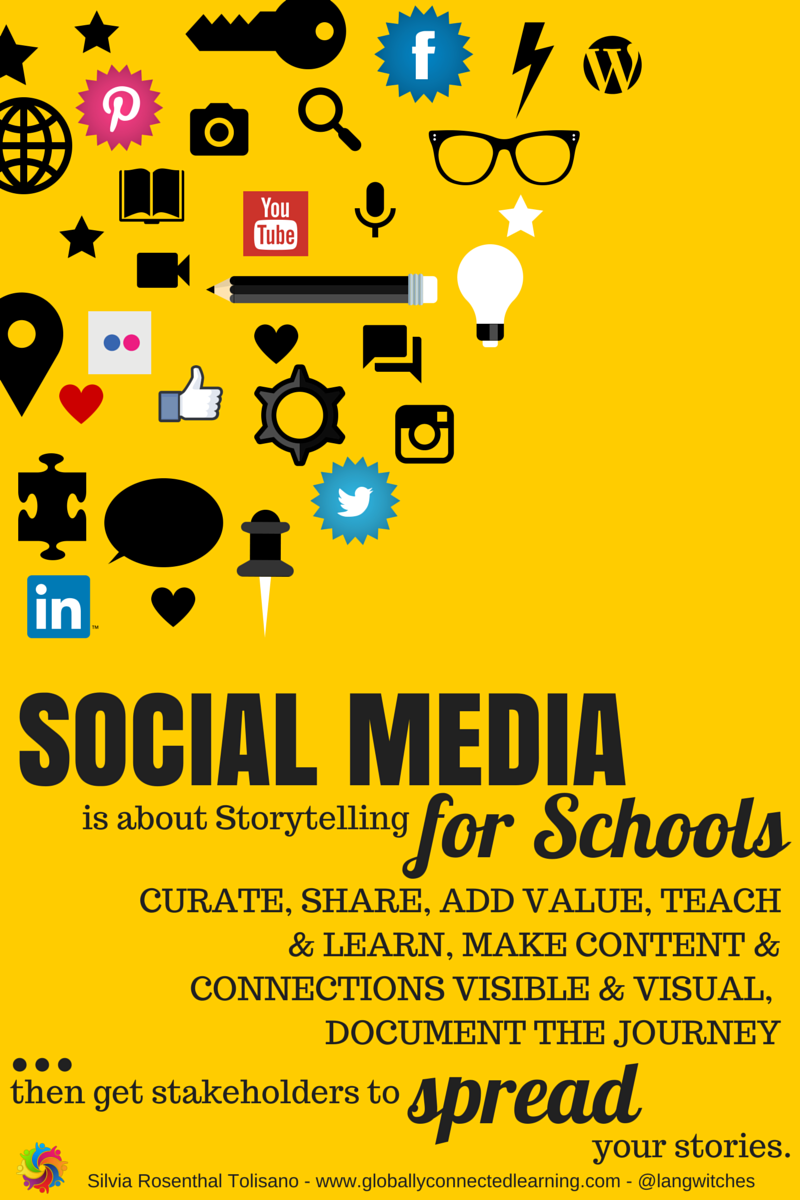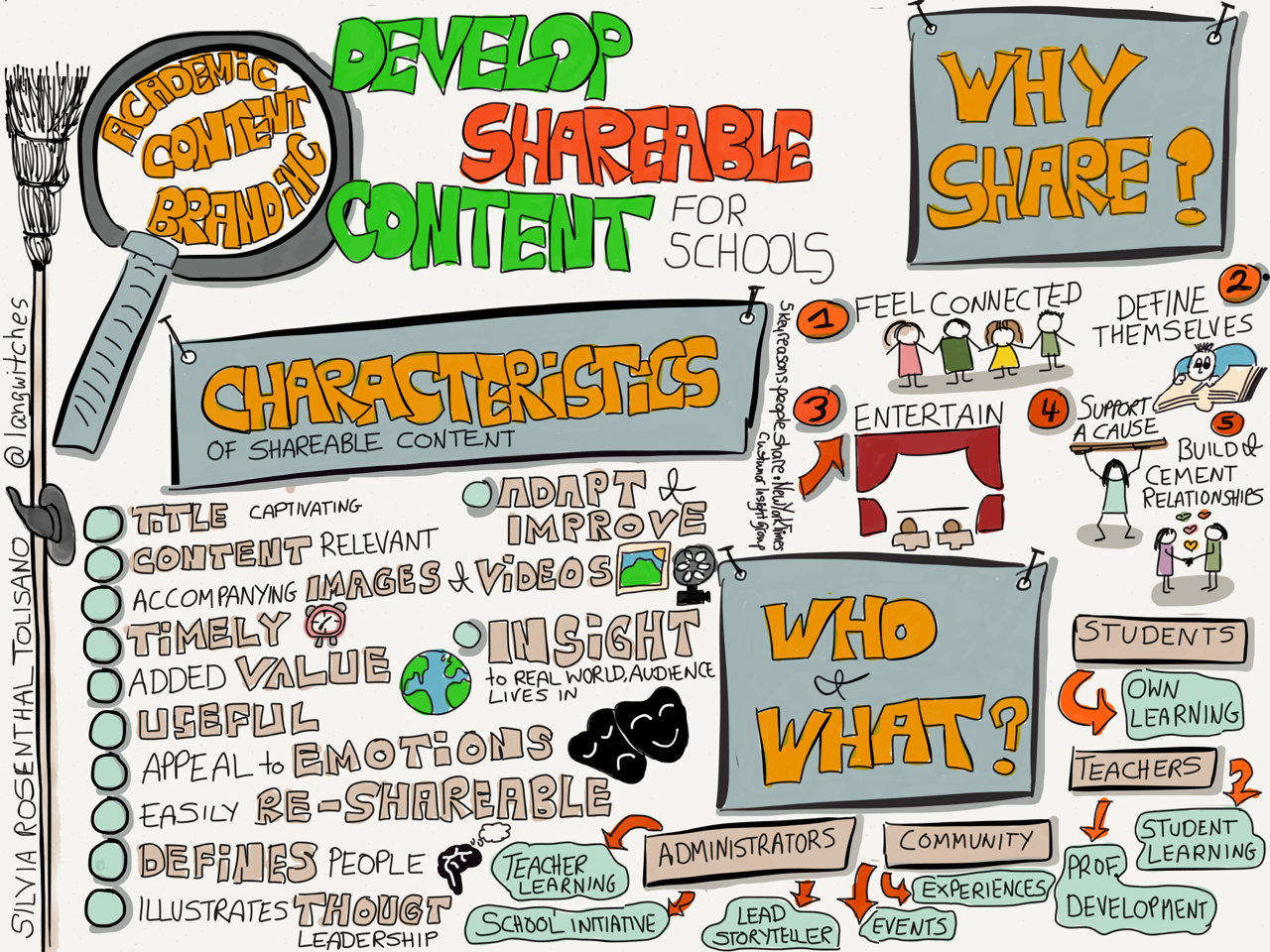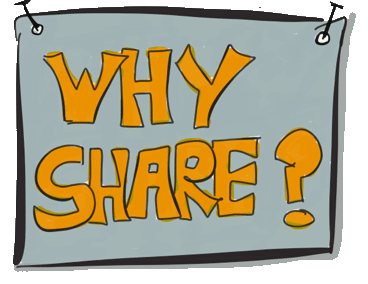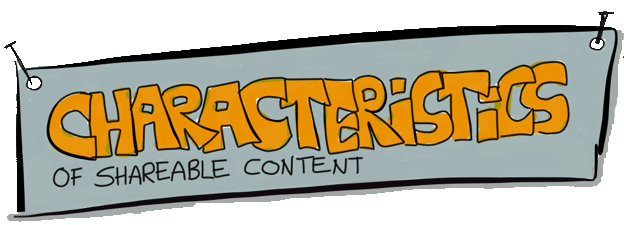Social Media FOR Schools: Developing Shareable Content for Schools
There is a difference between Social Media IN schools and Social Media FOR schools. Click To Tweet
While social media in schools deals primarily with policies around how to use (or not use) social media in the classroom with students, social media for schools is about storytelling and getting their stakeholders (teachers, students, administrators, parents, community) to spread these stories.
In the best case scenarios, social media IN schools is focused on:
- developing best practices HOW to use social media to support teaching and learning
- connect, communicate and collaborate through social media to an authentic global audience
In worst case scenario, social media IN schools is focused on:
- preventing the use by students
- regulating the use of social media by teachers
- not allow access to prevent network security issues, institutional transparency, cyberbullying, etc.
This post does not focus on any of these issues, but on the potential of using social media FOR schools. Telling the story of schools serves several purposes:
- curation (find, filter, organize, connect and present) information for their stakeholders
- adding value to a conversation, topic, theme, initiative with quality content
- sharing of best practices in teaching and learning
- making quality content visible to and shareable with others
- creating connections and a network of schools to advance education
- documenting institutional memory
Column Five states in the video, The Value of Visualization,

Your message is only as good as your ability to share it
Tools and ideas to transform education. Sign up below.
Your message is only as good as your ability to share it Click To Tweet
The quote above begs the question, how schools are leveraging the power of sharing their message via social media and grow their ability to develop shareable content to contribute to a global educational community?
Let’s look at developing shareable content for schools through an academic lens and in terms of branding schools globally as a learning community.

Let’s consider the why, who, what and characteristics of developing shareable content.

WHY SHARE?
According to The New York Times Customer Insight Group, there are 5 reasons why people share. How do these reasons relate to the reasons why schools might be sharing?
- Feel connected
Share school and team spirit and belonging through different venues. How are stakeholders connected to teaching and learning at the school? Who is involved in initiatives and projects? Who is part of the school community? - Define themselves
What do we, as a school, stand for, support, believe in? How do we fit in the community? What is our mission? What are our goals as a school community? What are we accepting as demonstration of our core values? - Entertain
Schools share images, videos and other media to provide enjoyment and give an insight to school life, capture teaching and learning as well as share products of student and teacher creativity. - Support a Cause
Schools spread initiatives and calls to action, encouraging support for variety of causes. - Build & Cement relationships
Schools are building, growing and cementing relationships with community members, local and global businesses, current and past students, families, faculty, experts, consultants and global educators.
WHO & WHAT TO SHARE?

Students share
- own learning
Students document their learning journey through the use of digital portfolios that are visible and accessible to an authentic global audience.
Teachers share
- own learning
Teachers experience reflective, metacognitive, connected learning through the use of their own professional learning portfolio - professional development
Teachers collaborate and contribute to a school’s professional development blog to document and share their professional development experiences ( conferences attended, online learning, professional readings, etc.) - student learning
Teachers capture evidence of learning (and its process) to inform further teaching. Teachers also share student work and learning to connect globally with experts and peers to amplify learning.
Administrators share
- own learning
Administrators are models of life long learners for their faculty and students. Through curation of resources and reflection of their own learning in progress, they make their commitment visible to others. - teacher learning
Administrators share bright spots of teaching, learning and innovation at their schools with a global audience - school initiatives
What are the goals of moving a school initiative forward? How will you achieve buy-in from stakeholders? How will you share information about background, supportive resources, progress, successes, etc.? - lead storyteller
Administrators should be the lead storytellers of their school. Lead storytellers do not leave what is being said about the school to others. They choose, what and how the story of their school community is told.
Community shares
- school experiences
The best marketing tool for any brand is when others share their (positive) experiences with their own network. This type of endorsement is worth more than if it were coming from the brand itself. - events
taking advantage of multiple “points of view” and documenters , gives the audience an amplified perspective and “coverage” of any event.
CHARACTERISTICS OF SHAREABLE CONTENT

The content created should exhibit the following characteristics:
- Title: must be capturing
We only have a split second to catch the attention of our audience in the age of information overload. The title should capture the potential viewer’s interest and encourage to share with their own network (word of mouth or/and online network) Think… “5 Ways to Avoid the Back to School Blues” or “Hurrah, The School is on Fire” - Content: relevant, timely, useful
The content must by relevant to the potential audience. Is it relevant to tweet out the school’s lunch menu? (Depends on the audience… students, faculty, parent community… possibly… a global audience… most likely not). Think… Looking to make global connections for your students to participate in a project about the 2016 Olympics? Make sure the content does not get disseminated a few days before the start of the games, but allow time to form these connections. Disseminate content, useful to others, to teach and learn about the Olympics the months before the upcoming games. - Accompanying Images and Videos (and other visual content)
Our brain processes visual content at a much faster rate than text alone. Statistics support that your audience will be more likely to click on a post if it contains a visual versus text alone.
Think… infographics, Memes, short video clips, how-to-guides, high quality photography - Added Value
Shareable content usuallyprovides some sort of added value to potential audiences to encourage re-sharing. Simple copying or repackaging of material created by others (might also infringe on copyright) does not support building of a creative, innovative school brand. Find ways to add value for others by curating and filtering information, adding perspectives to issues, make connections to thoughts, ideas and concepts visible to others. Think…” Carol Dweck’s Growth versus Fixed Mindset is sweeping the educational arena around the world, we are sharing with you how our faculty is applying her work in the classroom….” - Appeal to Emotions (joy, fear, surprise, self-esteem effection, trust, hope, pleasure, uncertainty, amusement)
Nothing can be stronger than provoking emotions in your audience to encourage them to share your content with others. What matters most to your audience: their children, their teaching job and career? their education? Career readiness? Safety? Create content that appeal to any of these emotions) Think… fostering loyalty and driving school advocacy. How about about holding a contest for alumni to contribute photos of their years spent at your school or create an infographic about your school’s alumni college success or a video following a recent graduate to a feeder school? - Easily shareable
Make it as easy as possible for your content to be shared, streamline the process as much as possible for your audience. Make your content available on different platforms to encourage the users of these platforms to share with their network. Think… Have social media share buttons embedded in your posts (Tweet this, Pin This, Like Us on Facebook, etc.). Best if you can make one-click sharing available. - Defines people
We share with others the things that define us? Take a deep look at what defines your school and its community? Is it academics? Is it Sports? A combination? Is your school known for innovation? Show your audience a version of themselves, a way they define themselves or as they want to be seen by others and they’ll be more likely to pass it along to their network. Think… content that demonstrates leadership in innovation among competitor schools. Content that supports the vision of the school employing top educators of the region. - Illustrates thought leadership
We live in a moment in history, where change happens at lightning speed. Traditional pedagogy, tried and proven to be effective for decades, suddenly is proving to not prepare students with the necessary skills and literacies for their future. Every school, every administrator and every teacher is presented with opportunities for action research in any area of educational interest. By choosing to explore these opportunities further, we all are becoming pioneers redefining and transforming teaching and learning. Think… Capture and document the learning process your school is undertaking as you implement digital portfolios. - Adapt, Remix and Improve
Stand on the shoulders of your network. Learn from others, adapt, remix and improve on their work. Become part of an ecosystem to collaborate and improve education. The different puzzle pieces making up the ecosystem feel first hand how contributing makes each component function better. Take a closer look at Creative Commons work from other educators and schools and create content to add value, share examples or perspective. Think…sharing means amplification - Insight to real world stakeholders live in
Share content with your audience that demonstrates to them, you have an insight into their real world. Do you want students/parents/teachers to help tell the story of your school, create content that gives them insight into their own world and they will help you spread the word. Think…content that illustrates how to survive pre-teen and teenage years. Create content that guides your students through the selection of high school courses. Illustrate how to manage homework load.
Interested in having Silvia work with your school to develop a social media strategy?
Contact her to discuss consulting options.
cross posted at langwitches.org/blog
Silvia Tolisano is a Curriculum21 faculty member, author of the book Digital Storytelling Tools for Educators and founder of the Around the World with 80 Schools project. Read more at http://langwitches.org/blog.
